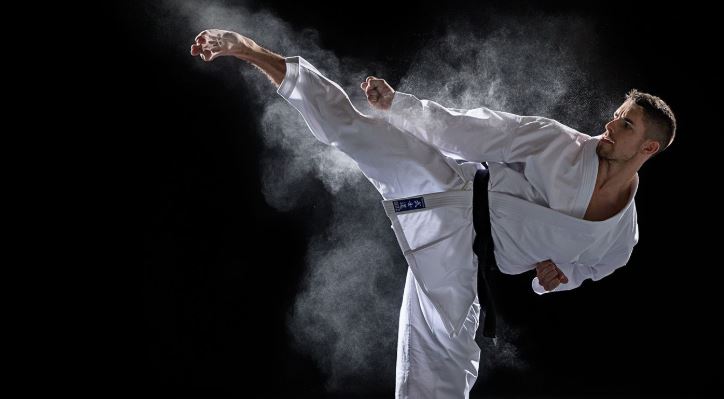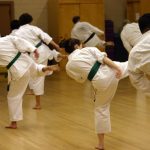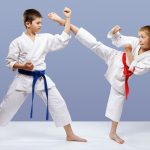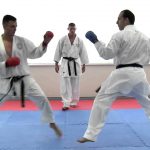More About Martial Arts

These days we relate Martial arts to East Asia, but initially the battle systems in Europe as far back as 1550 were known as Martial arts. They were named after the Roman god of war, “Mars”, and “Arts of Mars” became “Martial Arts.” That’s rather interesting because every time you hear “Martial arts” you more likely associate it with Mr Miyagi teaching Daniel Son to “wax on and wax off” while pruning his Bonsais, rather than law enforcement using it in combat.
Why are Martial Artists always Barefoot?
The first reason is an obvious one, stability. One’s feet have prints like those on your fingers, and this probably assists in gripping the floor, helping with balance and movement. Shoes are inanimate objects that can either produce too much grip or cause you to slip; natural is always better. That is how our bodies were made and meant to work. Barefoot, you’ll feel and sense better; you’ll know where to position yourself, where your foot lands and you’ll be able to anticipate the movement of your opponent through vibrations on the floor.
In Martial Arts, utilizing specific muscles is of utmost importance. With shoes on, you’d be using different muscles, and your instructor would be unsure of your foot angles. It could also inhibit the correct development of muscles, as it could affect your technique and execution. Then there is the general cleanliness and respect for your tools. Most martial arts are performed indoors on mats. By removing your shoes on arrival, you prevent the outside from coming in and dirtying the carpets or floor. Being barefoot prevents the chances of rugs being torn by shoes or floors being scuffed by soles.
The Best Attire for Martial Arts
If you are looking to join your first class and are not sure of what to wear, consider which type you are attending. For a Karate class, tracksuit pants and a t-shirt might be appropriate, remember you will be moving a lot so make sure your pants fit perfectly, one would hate for your bottom to show after a kick in an art that is all about respect. The best advice would be from the instructor of your class, so find out beforehand. Generally, baggy shorts (around the legs not around the waist), tracksuit pants, a t-shirt or long-sleeved shirt and nothing revealing or restrictive, would be appropriate.
To Eat or Not to Eat Before a Workout
This is a controversial question with many opinions. Some say yes, some say no, some say eat both before and after a class, and the extremists say add a meal during your workout. You know your body better than anyone, you will see if you perform better on a full or empty stomach. You know which foods will give you stitches, or make you want to get sick. Certain foods will make you feel heavy and sluggish, and others will provide you with the strength to push harder and faster for longer. Listen to your body.



